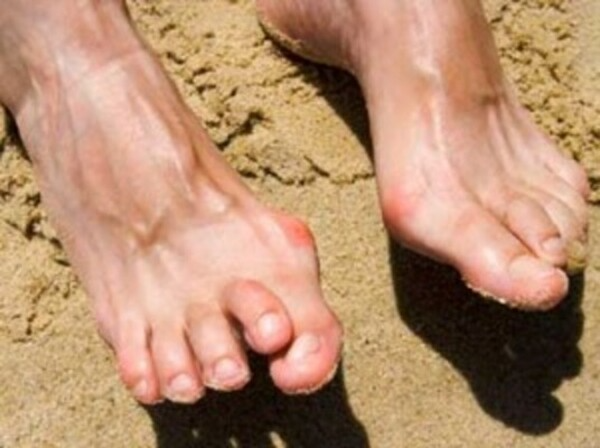
Crossover toe is a condition in which the second toe drifts toward the big toe and eventually crosses over and lies on top of the big toe. It can occur at any age, but is most often seen in adults.
Crossover toe is similar in appearance to a hammer toe, but is a more complex issue. It’s a result of abnormal foot mechanics, where the ball of the foot beneath the second toe joint takes an excessive amount of weight bearing pressure. This pressure eventually leads to a weakening of the ligaments and a failure of the joint to stabilize the toe, which results in the toe crossing over.
Crossover toe is frequently seen with bunions, a longer second toe than big toe, an unstable arch, or a tight calf muscle.
Overlapping toes are a deformity of the toes, characterized by one toe lying on top of an adjacent toe. The fifth toe (smallest) is the most commonly affected, but it also appears in the second toe. Overlapping toes most commonly appear in newborns, and is thought to develop in the womb, possibly due to the position of the fetus.
Passive stretching and adhesive taping is most commonly used to correct overlapping toes in infants, but the deformity usually recurs. Surgical correction can be performed by releasing the tendon and soft tissues about the joint at the base of the fifth toe. In some extreme cases, a pin may be surgically inserted to hold the toe in a straightened position. The pin, which exits the tip of the toe, may be left in place for up to three weeks.
Underlapping toes is a deformity which involves the fourth and fifth toes. Seen in patients of all ages, its exact cause is unknown, but is thought to be caused by an inherited trait in the structure of the foot.
Underlapping toes are most likely caused by an imbalance in muscle strength of the small muscles of the foot. If deformed toes are flexible, a simple release of the tendon in the toe will allow for them to straighten. If the deformity is rigid, surgery may be needed to remove a small portion of the bone in the toe.
A special form of underlapping toes is called clinodactyly or congenital curly toes. Curly Toes is fairly common and frequently runs in families. One or more toes may be involved, with toes three, four, and five of both feet most commonly affected.
